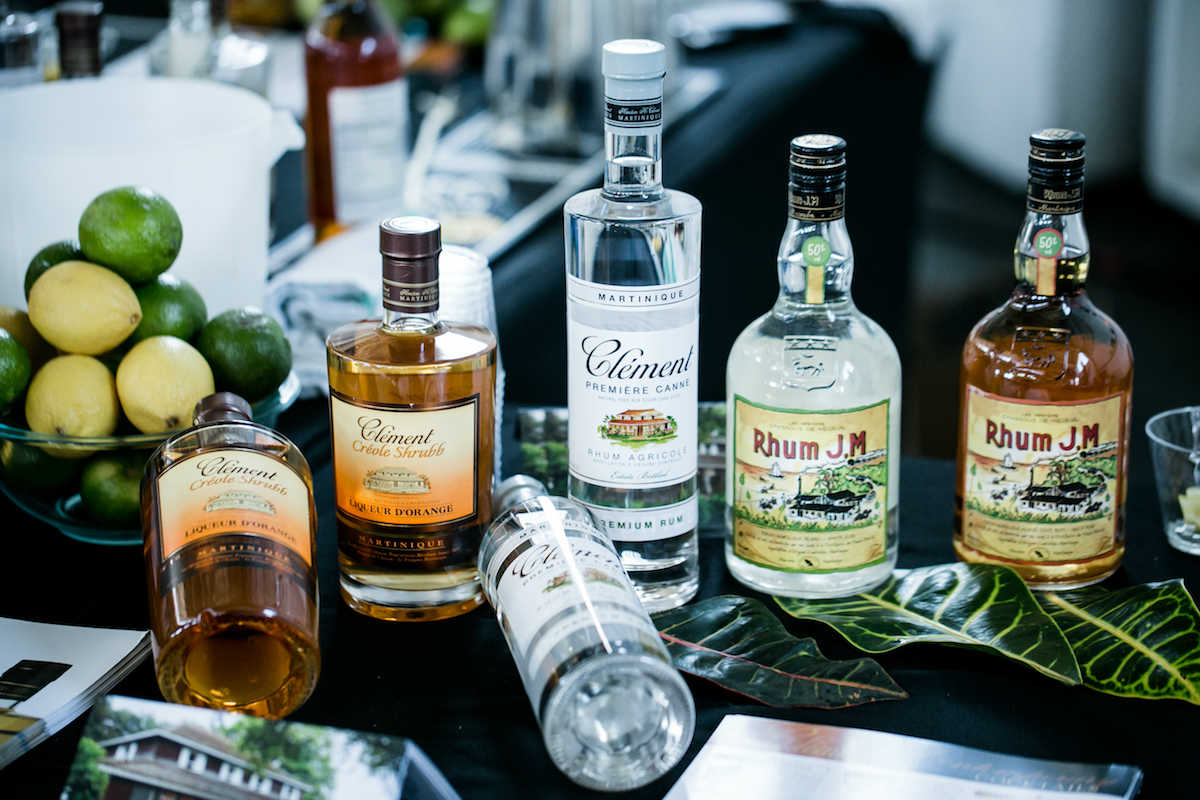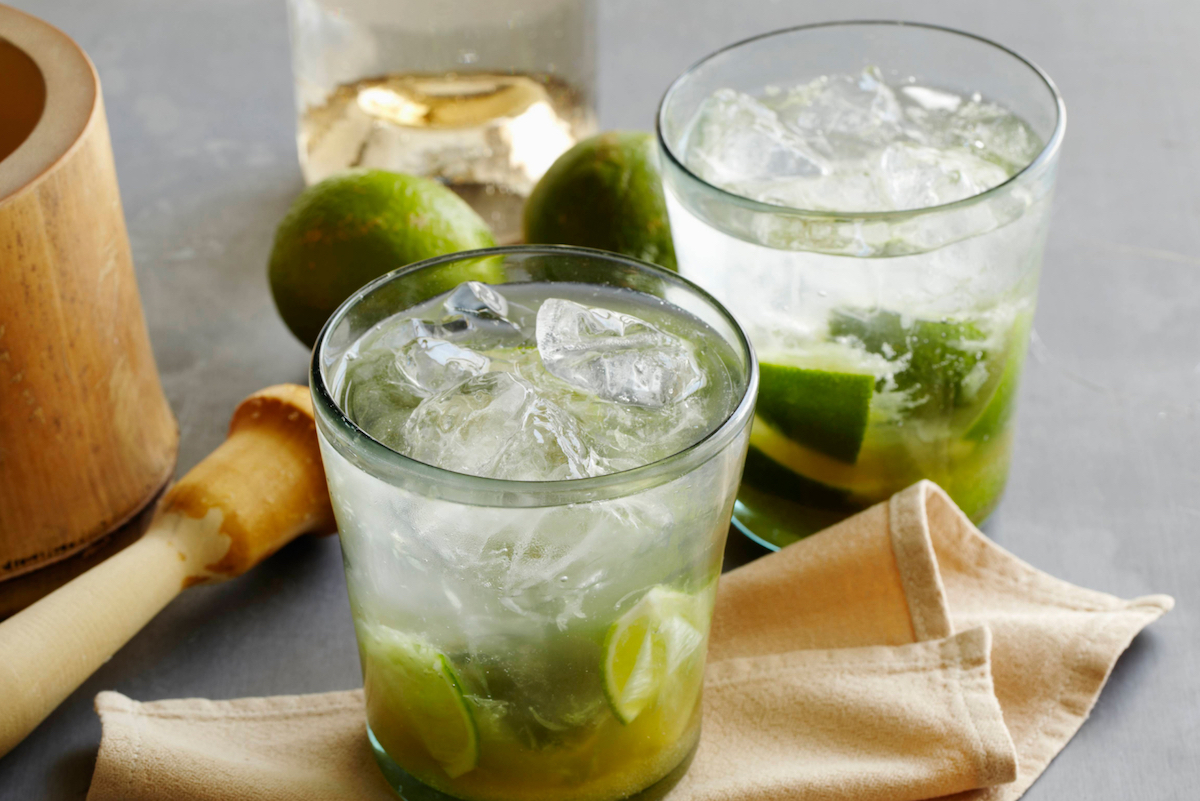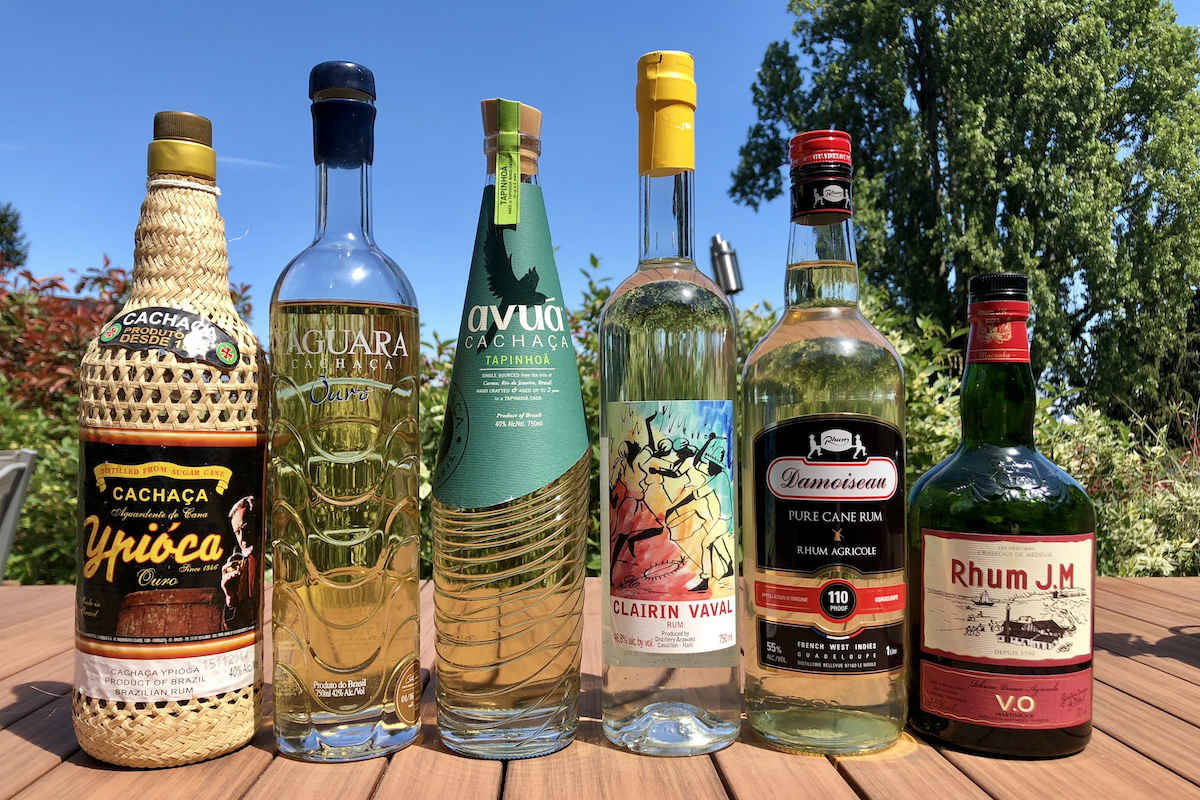In last month’s column, we took a brief spin through the early history of Caribbean rum, as well as explained how rum, rhum, and ron are all just cane spirits, expressed in three different languages commonly found in the Caribbean—English, French, and Spanish, respectively. We also dove into how the sugar cane crop is processed into both sugar and molasses, with molasses being the basis for the vast majority of the world’s cane spirits.
This month, we’re going to wrap things up and learn how a few more cane spirit terms like aguardiente, agricole, cachaça, and clairin fit into the cane spirits puzzle.
Aguardiente – The Proto Spirit
Aguardiente is a Spanish-language word with no crisply-defined definition across the globe. However, it’s generally understood to be a raw, distilled spirit without any finishing, such as aging. No distinction is made between the source materials, e.g. cane, fruit, or grains, unless specified. For example, Brazilian Aguardente de Cana specifically refers to a cana (cane) spirit.
In Cuba, what comes off the stills is known as aguardiente, rough and unfinished. Per the Cuban rum regulations, it’s only after two years of aging and filtration that it becomes ron (rum).
Generally speaking, if a spirit is referred to as aguardiente, it’s most likely because it doesn’t meet the bar to be called something fancier. It’s similar to how bourbon is a more specific term than whiskey.
Enter Agricole

Rhum Agricoles from Clement and Rhum JM.
Circa the 1870s, the French Caribbean islands of Martinique and Guadeloupe saw the demand for their processed sugar from their continental parent plummet. (It’s a long story involving Napoleon and sugar beets that we’ll save for another time.) With little demand for the islands’ processed sugar, cane farmers had little incentive to separate the sugar from molasses. Instead, they began making rhum with cane juice. It’s less work, and cane juice holds a higher sugar content than molasses. More fermentable sugar means more rhum per batch.
It’s important to note here that the flavor of unaged cane-juice-based distillate has a distinct, readily identifiable grassy and vegetal note that you don’t get with molasses-based distillates. It really is much more representative of the local terroir than molasses, which is commonly shipped all over the globe. And when working with cane juice, you only have a few hours to start fermenting it before it spoils. As such, it’s hyper-local to an extreme.
From the 1870s to the 1960s, the French Caribbean islands moved from nearly all molasses-based distillate to nearly all cane-juice distillate. To differentiate the two styles of rhum, cane juice-based distillate was termed rhum agricole (agricultural) whereas molasses-based rhum was dubbed rhum traditionnel (traditional). Or, more pejoratively: rhum industriel (industrial).
In recent years, writers have used the terms rhum and rhum agricole inconsistently. Some believe that “rhum” means cane-juice based rhum. But as we learned earlier, rhum is just the French word for a cane spirit. Some believe that rhum agricole must be made in Martinique or Guadeloupe. And some (misguided) folks believe that any non-molasses based cane spirit is agricole.
Here’s my take: The term rhum, used by itself, simply means a cane-based (either molasses or cane juice) distillate, expressed using the French word. If you sold Jamaican rum in Paris, it would likely still be labeled “rhum.”
However, if you say rhum agricole, it implies cane-juice based rhum, but it could be made anywhere. If made in a non-French heritage locale, most experts would just call it agricole or agricole-style. Put another way, it’s the term agricole that implies a cane-juice ferment, not rhum. And if you truly want to refer to rhums made on Martinique—and subject to Martinique’s AOC regulations—calling it Martinique AOC rhum or Appellation d’Origine Contrôlée is the way to go.
With one notable exception (see below), cane juice based spirits comprise a relatively small percentage of the overall market. However, they’re responsible for much of the confusion that beginners experience. Let’s head to South America and dig in deeper.
Beyond Rum, Rhum, Ron

The Cachaça-spiked Caipirinha: Brazil’s favorite cocktail.
A bit to the south of the Caribbean lies the gigantic country of Brazil. At least a century before rum started in the Caribbean, Dutch colonists were making cane juice distillate in Brazil—we know this Brazilian spirit as cachaça. As a country that speaks Portuguese, they’re not inclined to use rum, rhum, or even ron. You might wonder how cachaça differs from rhum agricole. Suffice it to say, there are important differences in distillation and aging, which yield very different end results. In particular, cachaça is often aged in native hardwoods like Amburana or Zebrawood that provide very different flavor characteristics than the more commonly used American and French oak.
Like Martinique AOC rhum, cachaça has its own geographical indicator or rules that define how and where it’s made. Only in the past five years has the U.S. recognized cachaça as a distinct product, rather than just rhum from Brazil.
Brazil also makes a related cane spirit known as aguardiente de caña. Essentially, cachaça is a higher quality subset of Brazilian cane spirits and that’s what I’m focused on here. And while cachaça and aguardiente de caña may seem esoteric, when taken together these two Brazilian spirits make up more produced volume than any other cane spirit. The Brazilians really love their caipirinhas!
Back in the Caribbean, clairin from Haiti has been getting attention as the “it” cane spirit of the moment. Most clairin is made from cane juice, so often has a similar taste profile to rhum agricole. However, clairin is rawer and more simply made than the high precision rhum agricoles of Martinique and Guadeloupe. Some clairins even use the trick the Jamaicans use to create funky rums: dunder.
From a purely technical standpoint, cachaça and clairin might be thought of as special cases of agricole style rum. However, their advocates are very vocal about their particular traditions, and they don’t want their spirit lumped into the general rum/rhum/ron category. In distinguishing themselves, they allow for higher value to be associated with them.
The world of cane spirits is vastly more complex than what I’ve covered above. However, my goal for this column is to bring clarity to the fundamental terms that befuddle new cane spirits enthusiasts. With so many excited newcomers talking about rum, and possibly not knowing the ideal terminology, it can be a challenge when trying to converse with other enthusiasts. Hopefully the information above instills a bit more confidence in your understanding of all things cane.



